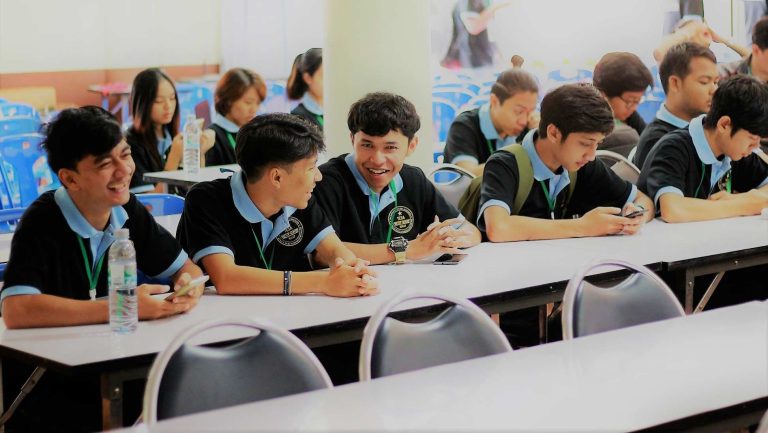


From 6-13 January 2018, the Top Gun Rally gathered 300 Thai engineering students to join a five-day hackathon. The Thai Embedded Systems Association (TESA) created this annual “rally” to boost national student skills and provide the industry with talented engineers. Participants are getting morning lectures and are challenged with development problems in the afternoon.
This year’s event is sponsored by CAT Telecom, I had the chance to be invited to support CAT’s team with my LoRaWAN expertise and our ThingPark developer tools. Being with Actility Asia Pacific sales engineering team for two years now, it was the first time I was joining such an important developer event and the vibrant energy from all the participants was really amazing and exciting.
The challenge was to turn Khao Yai, the country’s third largest park, into a “Smart National Park 4.0”. To understand this choice, I turned to Professor Vara Varavithya from King Mongkut’s University of Technology North Bangkok, who was responsible for the event’s technical set-up.
“The Government is pushing the country towards Thailand 4.0 and this IoT project with a national park was an ideal opportunity. The Department of National Park loved the idea and we found with TESA the perfect candidate for it: Khao Yai.” Professor Varavithya
The reasons are threefold:
The national park is located three hours North of Bangkok. It spans over + 2,000 km and welcomes 5,000 people (visitors and staff) each day. Khao Yai is part of the Dong Phayayen-Khao Yai Forest Complex, a World Heritage Site declared by UNESCO. This pristine natural environment suffers from illegal logging, poaching, and traffic accidents.
“This IoT challenge leverages embedded systems, sensors and communications to come up with a solution to monitor the incidents in the park and alert the relevant park rangers. CAT Telecom provides participants with LoRaWAN connectivity, that is both low-power and long range”, comments Dr. Nuttawit, Executive VP at CAT Telecom.
For this kind of use case, students needed to create energy-saving devices because batteries can’t be charged or changed easily. The LoRaWAN technology was a perfect fit then: wide coverage, low energy consumption and it’s cheaper than cellular connectivity.
All 41 teams used LoRaWAN dev kits offered by CAT Telecom to create sensor-based solutions. he students could integrate and test them with the different tools available on ThingPark partner portal.
“We certainly want our LoRaWAN service to be 100% available and reliable, and with Actility’s support we ensured that the network was always up and running during the event.” Dr Nuttawit, CAT Telecom
Real problem-solving
During this hackathon, I’ve discussed with one of the teams, the “Hookworm”. The five members are 4th year engineering students at King Mongkul’s Institute of Technology Ladkraban. It’s the second year in a row this team is taking part in the Top Gun Rally. In 2017, they ranked 3rd in the competition with a smart monitoring system using image processing for a durian farm.
For this year’s project, they had to develop a solution using accelerometer and temperature sensors set on trees to detect major vibrations or shocks and send an alarm to the park staff when:
“The LoRaWAN technology is easy to use, and so is device provisioning with the ThingPark developer tools. The platform is user-friendly.” The Hookworm team
What do these five students take away from such development events? Their list is long…
Unfortunately, I had to leave before the award ceremony on Saturday 13 January… but I was glad to learn that the “Hookworm” came first and see the award pictures online.
A sample of a huge community
Catching up with Dr. Nuttawit at CAT Telecom after the event enlightened me about the scale and needs of the IoT developer community in Thailand:
“There are almost 300 students/IoT developers from top engineering schools around the nation that CAT Telecom and Actility have supported during this event. Based on the numerous requests of LoRaWAN technology training we received recently, we believe that the number of IoT developers in Thailand is huge.”
Feeling all the energy and commitment from the Thai development community, as well as from the education and industry towards innovative low-power smart solutions was very exciting and inspiring. I would like to thank all the CAT Telecom team and Dr. Nuttawit for the invitation, the TESA team for their warm welcome and all the professors and students I met during the event.
© 2024 Actility’s All Rights Reserved